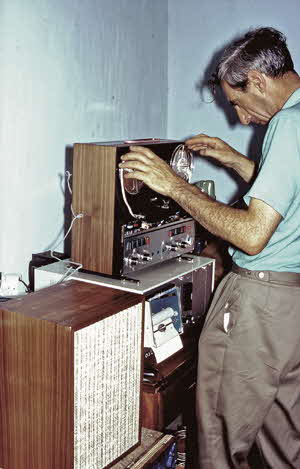|
For a long time we were puzzled about a vowel that we could not deal with. It was found in the word for basket = sang. At the same time sang could also mean star. What is the difference? We tried to discover some tonal variation, with no result. Then we consulted a linguistic expert. He tended to seek the difference in the vowel quality. Instead of a normal "a" the word for star would use an open-mid back unrounded vowel, a kind of short "a", written as "Λ" in the International Phonetic Alphabet. Tests, however, proofed that this could not be the answer to our problem.
|



